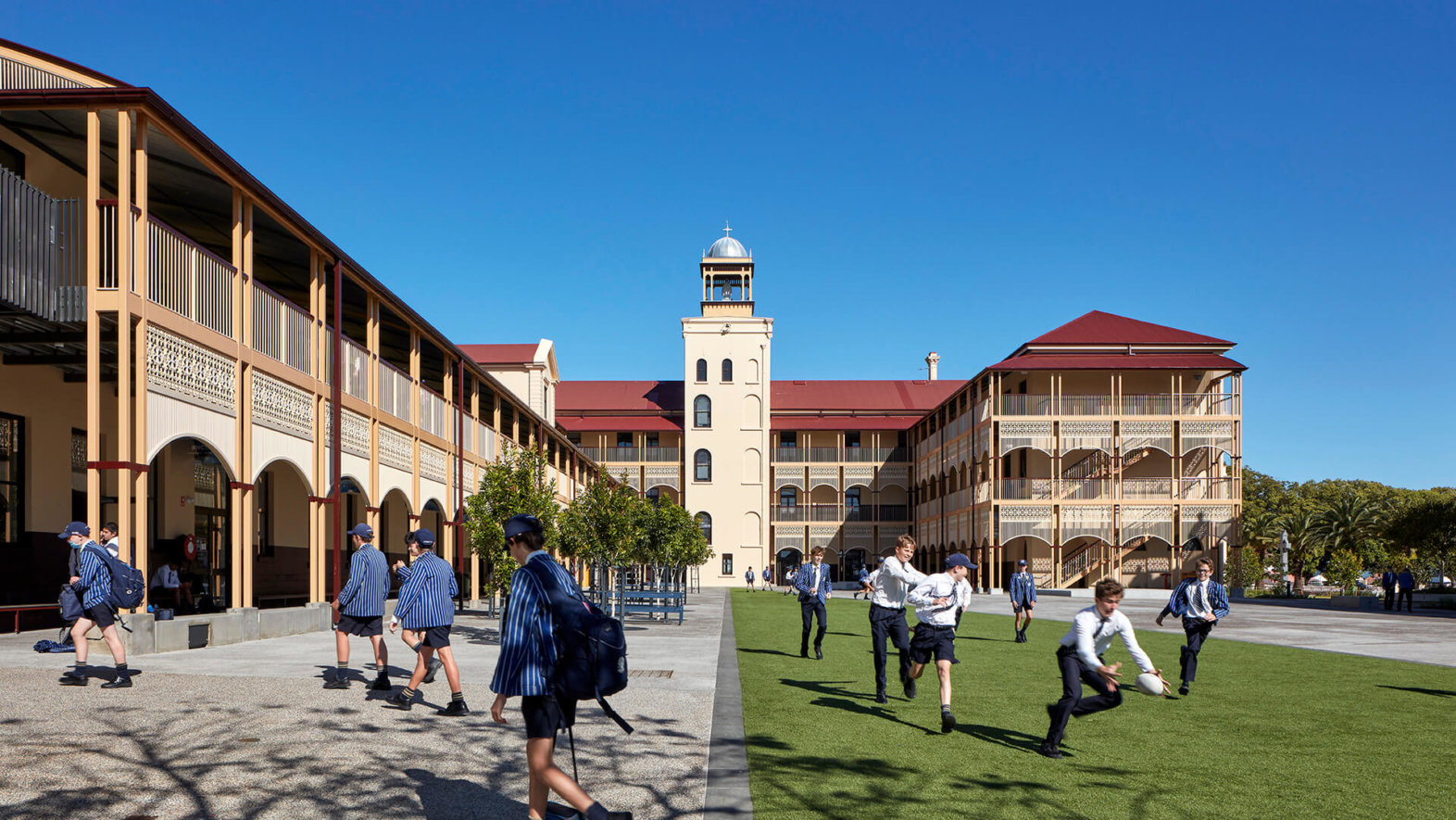Between the arrival of the tech-savvy Alpha generation and an increase in online learning, there is a lot going on in the educational space where architecture and design are concerned. So we sat down with Ben Vielle, a partner of m3architecture – Australia’s most awarded practice for education. The architect weighs in on the evolution of education design, lets us in on some of the revolutionary work his practice has done at a new primary school in Queensland – and convinces every school out there to ensure they have a master plan. The latter is particularly close to Ben’s architectural heart.
“It really is vital,” he says. “Where there is no master plan, there is no longer-term thinking about where the school is headed. That’s why there are so many schools with ad hoc solutions where immediate needs are satisfied by adding on a new thing, or refurbishing something without thinking about the long-term impact that has on either the heritage and identity of the school, or the open space requirements for the facility. People get attracted to shiny new things, and there’s plenty of examples in schools where you see this off-the-cuff accumulation of buildings on buildings that take over the site.”
The St Joseph’s Nudgee College Treacy Precinct in Boondall, Queensland project is an apt demonstration of that. Originally, the practice was engaged to build a new classroom block. However, this first brief started a thoughtful review of the existing buildings, and a collaboration that has spanned well over a decade.
Marked by nine different projects, these years have seen m3architecture bring this iconic educational facility back to its former glory by removing some of the 1970 buildings that have latched onto the precinct in a detrimental, ad hoc way over the years, and creating a master plan that provided an in-depth look at the other existing edifices. “These structures are significant,” Ben points out. “And from an environmental and economic point of view, it makes sense to utilise these buildings in a better way.”
Of course, beyond environmental and economic factors, informing these decisions was the idea of improving engagement. “It’s difficult to encourage engagement and positive behaviours in an environment that isn’t cared for,” he says. “And where you improve that situation, you see improvements in student behaviour and learning, because they’re more likely to want to be in particular spaces that are thoughtfully designed for them.”
There is no doubt that thoughtfully and carefully considered design is crucial to creating appealing, enduring and effective educational environments. But with the arrival of generation Alpha and a growing need for online teaching, how do we future-proof educational facilities to ensure they celebrate the evolving ways in which we learn?
“I believe that some things don’t change – while digital learning is fantastic, there is still this need for face-to-face-interaction. Because of that, physical schools will still exist in some form or another,” Ben says. “In terms of the way that things are taught, there is a definite shift. Generation Alpha have information and technological aids at their fingertips, which is evolving pedagogies in a way that requires teachers to move quickly between traditional instruction and more individual or group investigation work that encourages learning by inquiry. And one has to be able to flip between these two modes more readily than in the past.”
Ben explains that the impacts this has on spatial environments are many – and varied. “Sometimes you can cater to that in a traditional classroom space by adjusting furniture in the way that works within the space. Other times, a more radical rethink of how the spaces are connected to each other is required.”
Ben points to the revolutionary work m3architecture has done on the Suncoast Christian College project. “They teach six groups of year one and two or year three, and four students within one space. So you’ve got 150 kids, six teachers and four teacher aides – all within the one, connected space. Within it, there are many modalities you can choose – from an instructional environment, to a small group environment, to an individual environment.” There’s also a kitchen space and even an area where supervised students can conduct experiments. “In this kind of model, there isn’t a traditional classroom anymore,” Ben adds. “And the space has been tailored to the pedagogy that the school is driving.”
Inevitably, this circles back to the idea of a master plan, and having clarity on the school’s unique identity, long-term goals and aspirations – something Ben would like to see more of in an educational setting. “This reflection of who they are and what makes them different from the next school is missing from many campuses,” he says. “And schools could do better in terms of differentiating themselves and understanding exactly how they operate and how they want to teach.” And then, the thoughtful design that fosters engagement, yields academic results and keenly anticipates the future will follow.
